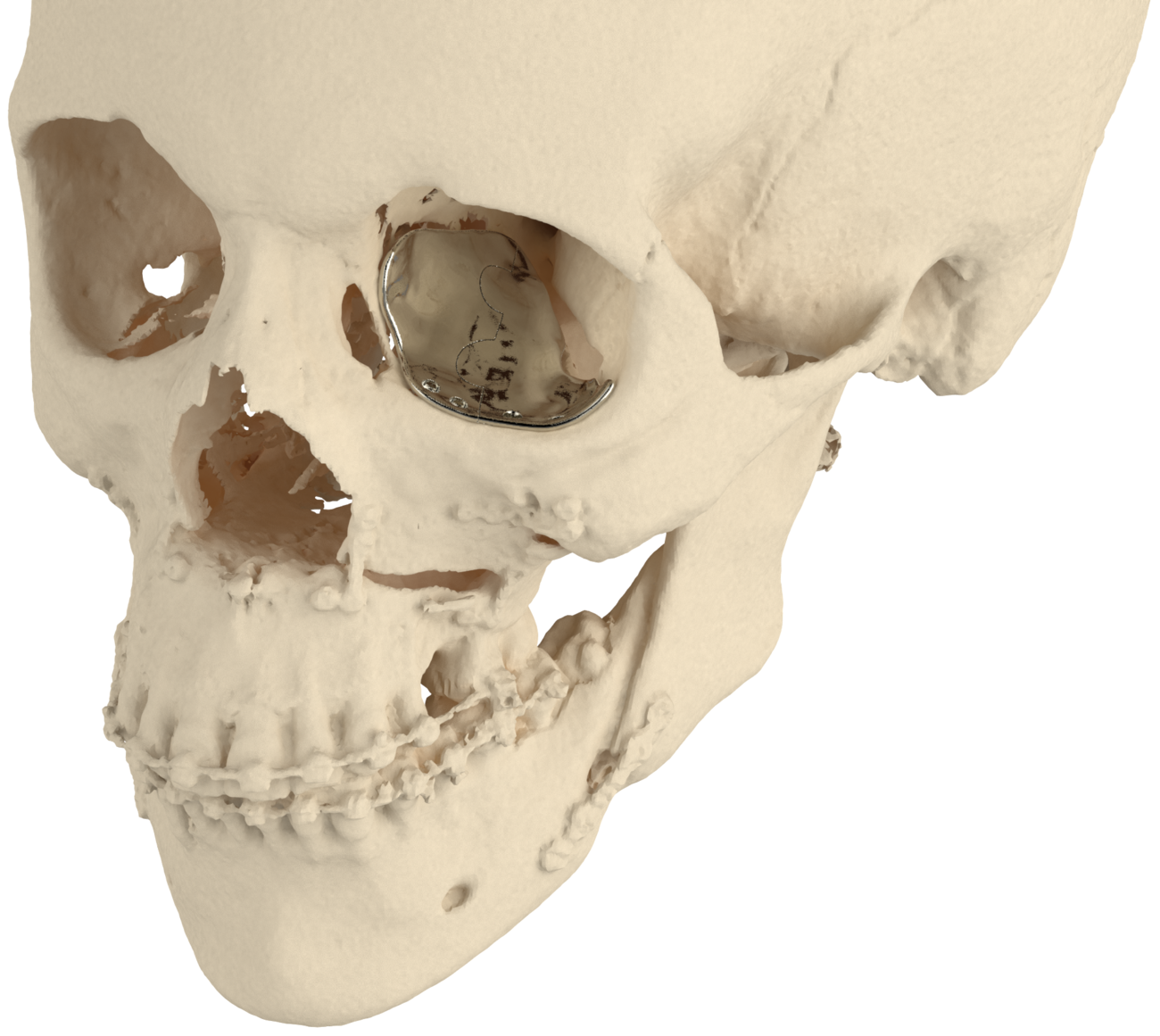Orbital wall reconstruction as part of Facial Contouring Implants

Secondary reconstruction of traumatic orbital wall defects can be performed with patient-specific CADskills plates. Reconstruction of large defects remains challenging since anatomical landmarks are lost, particularly the posteromedial orbital bulge and orbital apex.
Product specifications
The possibility to mirror the unaffected orbit, and determine the volume makes a patient-specific plate an excellent solution. The advantages include a true-to-original anatomical repair, restoration of orbital volume, and superior ophthalmological rehabilitation when evaluating for binocular single vision and ocular motility.
From a surgical point of view, insertion is simplified by the precise fit, and no operating time is wasted in shaping the implant. The orbital floor can be accessed using a transconjunctival approach, which allows exploration of both medial and lateral walls and leaves no scar on the skin. To prevent cutaneous scarring in late primary and secondary reconstruction and to achieve perfect shape and volume, a 3D puzzle-solving technique was developed. The puzzle-like interlocking of the implant pieces allows unambiguous anteroposterior positioning of one piece relative to the other.
The screw positions consider the infraorbital nerve, lacrimal apparatus, bone quantity, and insertion angle.
Contact us for more information,
fill in the form on the right or order
directly from your surgeon account.
Already have a surgeon account?

